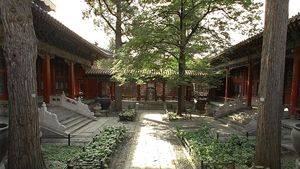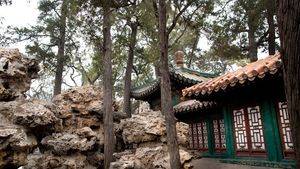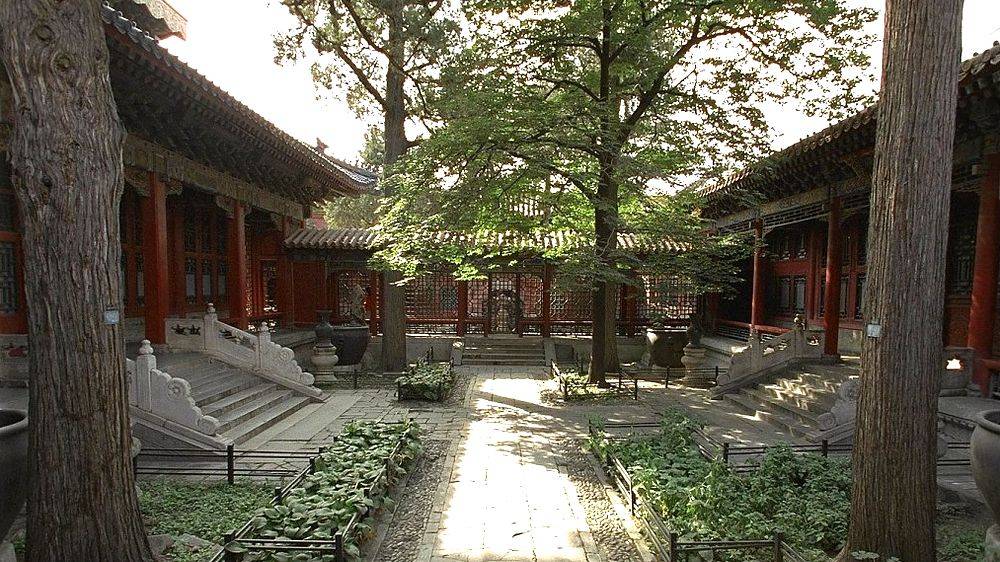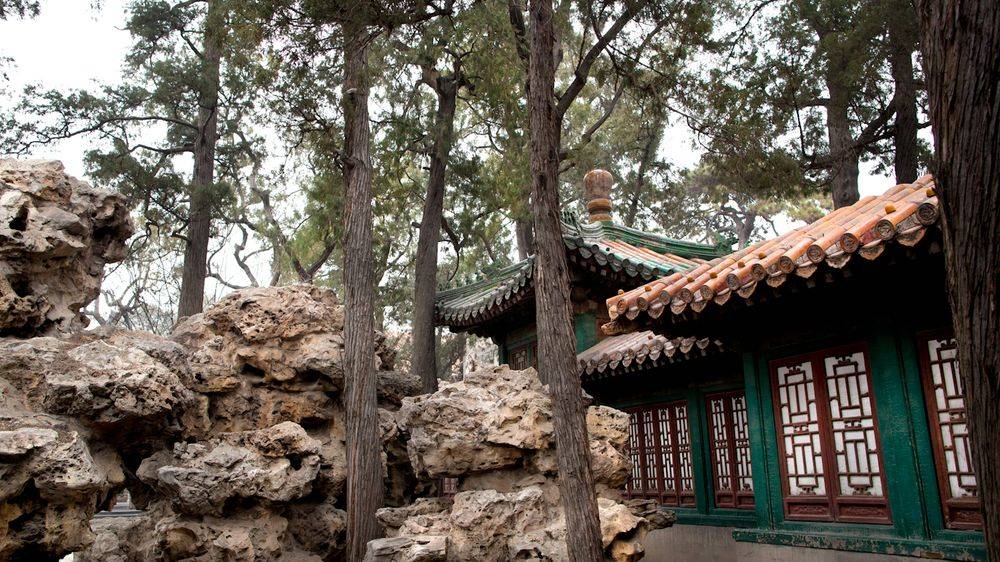Le jardin Qianlong (Ningshougong)

The garden of Qianlong
It is located in the western part of the Palace of the Tranquil Longevity. It was conceived in four parts, linked from south to north. Each of these parts represents a particular atmosphere. The first contains the pavilion of Ancient Flowers (Guhuaxuan) surrounded by rocky hills and tall old trees, as well as the small circular pavilion of Vin Accordant (Xi Shang Ting). In the second part there is the Pavilion of Realized Spirits (Suichutang), a closed enclosure with buildings on three sides, a main building facing south and a few lateral chambers to the east and west. In the third part one can enjoy the beautiful mountain scenery as well as the Sanyouxuan pavilion. Going further north, one arrives at the fourth and last part of the garden which contains with the Pavilion of Auspicious Waiting (Fuwangge), a labyrinth-like structure that the main architecture. Apart from these main buildings the gardens also host some secondary buildings, such as the pavilion of the Beautiful Landscape (Cuishanglou), the chamber of the Exhaustion of the service Diligent (Juanqinzhai), as well as the well of the Concubine Zhen (Zhengfeijing).
The Pavilion of Waiting for the Good Ages
The Pavilion of the Waiting for the Good Ages was built in 1772. Square in shape, it seems to have two floors but in fact it has three. The interior decoration is quite specific. The place has been divided into several decorative styles quite deftly. Chances are you get lost during your visit, hence its name "mysterious building". During the reign of Qianlong (1736-1795), the emperor offered meals to ministers and officials here on the 21st day of the 12th month of the lunar year. Emperor Jiaqing (1796-1820) wrote poems for him. As this is the highest architecture of the Qianlong Garden, it offers an overview of the beauty of the landscapes inside and outside the Forbidden City.

The garden of Qianlong
The well and the mourning room of Concubine Zhen (Zhenfeijing)
At the northern end of Qianlong Garden, next to the Waiting for Auspicious Pavilion, is the Zhen Concubine Well. This well has a story.
In 1887, the thirteenth year of the reign of Emperor Guangxu (Qing Dynasty, 1877-1908), the latter introduced Zhen, a new concubine, to Dowager Empress Cixi. But this woman, very powerful, did not appreciate it. Zhen supported the Emperor's political reform, so the Empress made sure that the reformation was overthrown to justify the separation of the emperor from all the concubines having supported it. So the empress could take power and ordered that Zhen be confined in the small courtyard behind the Jingqi room to prevent him from seeing Guangxu. In 1900, the Allied army attacked Beijing. The Dowager Empress then ordered Zhen to be thrown into the well in the small courtyard, but despite the intervention of Eunuchs, she managed to hang on to the nearby marble column. It took a particularly strong man to do the job, and once Zhen at the bottom of the well a heavy stone was set up for the butcher. It was not until a year before concubine Jin, Zhen's sister, could get the body out of the well and bury it normally. She built a kind of mausoleum, right next to the well, it's called Zhen Concubine House.
See too:
Back to the list of the pavilions of the forbidden city






















